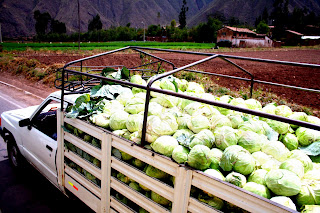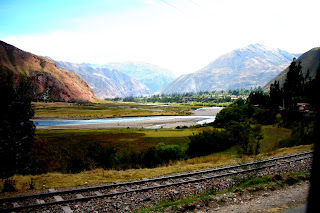I know, the suspense from Part 1 is killing you, right? :) Here's Part 2 of 3 of my 2011 Peruvian adventures!
After departing the Peruvian Amazon, we headed to Cusco, the historical site of the Inca Empire. As you can imagine, it's completely surrounded by breathtakingly beautiful Incan ruins. And centuries later, the intricate stones stacked upon stones still wedged together with not even the space for a piece of paper. The Killke occupied the region from 900 to 1200, prior to the arrival of the Incas in the 13th century.
At an elevation of over 11,000 feet, you will inevitably experience some sort of altitude symptoms upon arrival. If you're lucky, you'll just feel a little tired, have to deal with a dull headache for a day or two, and feel short of breath just simply being. That's all. After arriving in Cusco, our first priority was DRINK AS MUCH COCA TEA AS POSSIBLE. Cup after cup.... It's said that the plant is to help with elevation sickness, and I couldn't agree more! Whether it be my body's innate ability to handle high altitudes or the gallons of Coca tea I drank... I seemed to be fine.
We then began to explore the central part of Cusco, checking out the main square, some restaurants, and the many historic, stone buildings. Many of which were scavenged from Incan stonework by the Spaniards when they arrived from Europe.
The next day, after a lovely night's sleep - hey, you don't realize how awesome a warm bed is until you're sleeping in a netted room in the middle of the Amazon during wet season - we headed out to explore the Sacred Valley of the Incas! Let me tell you now, this is such an incredible experience! It's so hard to fathom completely in-tact buildings and stonework from thousands of years ago until you see it with your own eyes. And not only is the age of the work impressive, but the fact that these stones are so tightly morphed together (without ANY modern day tools). It's still a mystery and we can only speculate how this was done.
Our stop at Pisac taught us that those terraces in the hill sides - they're not actually CUT into the hillside, they're built on TOP of the hillside, in layers. from small sand to pebbles, to stones, all the way down to larger rocks. All of this is to help irrigate crops in the most appropriate way. And get this - they all still work just as good all these years later.
And, this was the burrial site of all Incan V.I.P.s - only the best of the best were burried here. If you look VERY closely - you can see small dark dots in the top right hill of the picture below - these are individual catacombs.
From Pisac, we journied on along the valley, passing cabbage trucks, stopping for delicious Peruvian food with (interestingly enough Inca Kola), and some pretty incredible views of the Andes Mountain range.
Ollantaytambo, with it's Temple Hill, terraces, and Storehouses, this is a very popular stop on the Sacred Valley route. Some of the largest single shaped stones on our journey were found here - estimated at over 50 tons per stone! It's incredible when you think about the mountains they had to cross to be moved to this location.
From Ollantaytambo, we headed to even higher elevation to Chinchero.
In Chinchero, we had the honor of meeting some local women and learning how they make their yarn, dye it, and craft their beautiful masterpieces.
Here is one of the many stones (not even the biggest!) at Saqsaywaman. These stones are proven to be quarried from 3-5 miles away over several mountains. It's still a mystery how the Icans managed this. Some say extraterestrials, some say simple man power. Whatever it was... it was AMAZING.
Slightly further from Saqsaywaman is the very small outpost called Puka Pukara. A small stop used in Incan times to tally what goods were coming in and out of Cusco. It was also used as a smoke signal point to send messages far distances at quick speeds.
A very common sight...
And for anyone who recieved a hand made token from Peru, it likely came from here. This hole-in-the-wall shop in central Cusco is a consolidation of the works of art of 4 different Peruvian women. Even more exciting is that I purchased all my goodies using only Espanol! :) Yay me.
In central Cusco, you'll find the stone with the most edges and the smallest Incan stone!
On our last night in Cusco, we hit the town and tried Alpaca meat with quinoa!! Very yum!


































As usual,nthe photos are amazing! It sounds likenyou paid attention during the tours or read some history books -- interesting stuff. I also noticed on the side bar, your bucket list, you will soon have some more items to check off. Hooray for world travel!
ReplyDelete